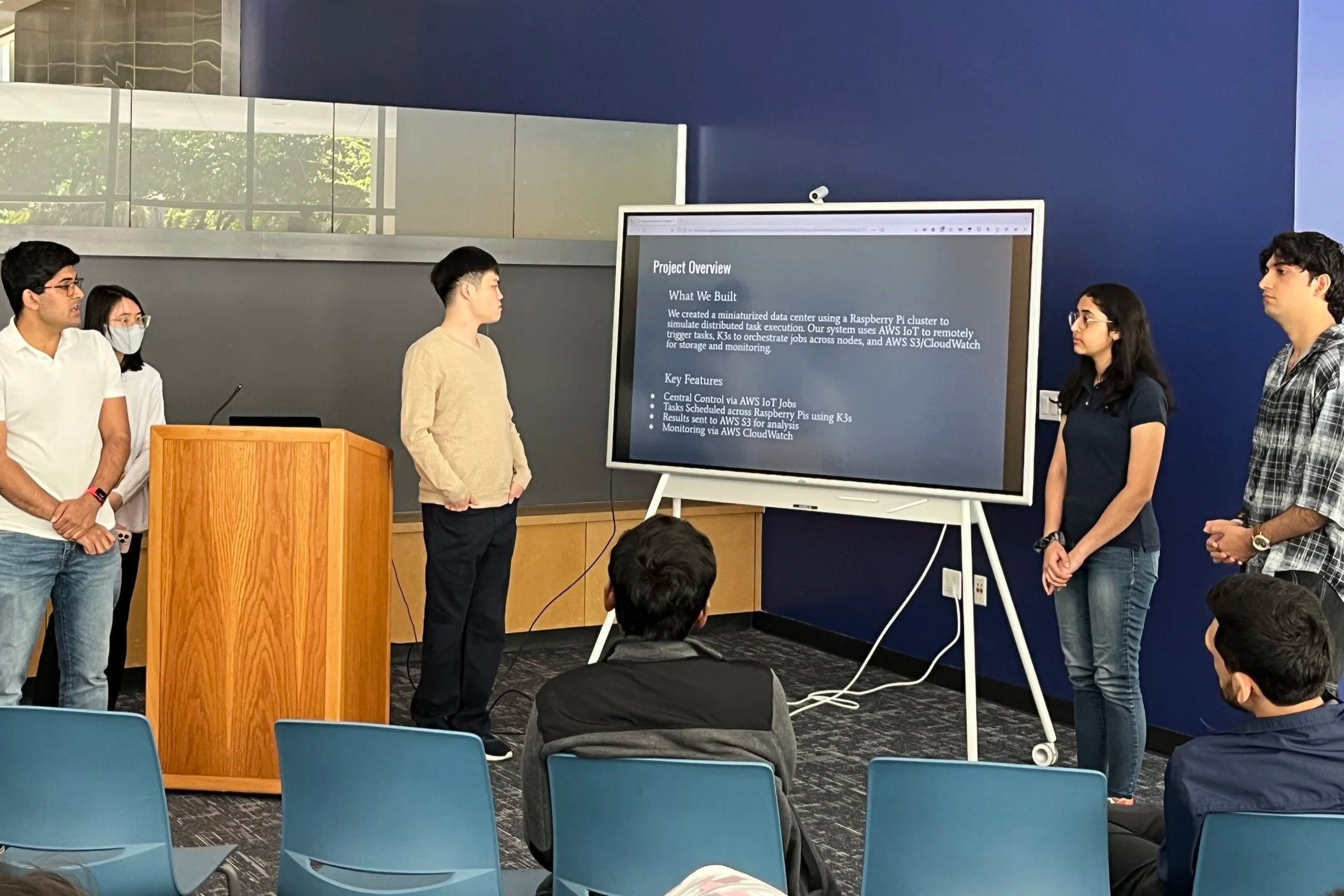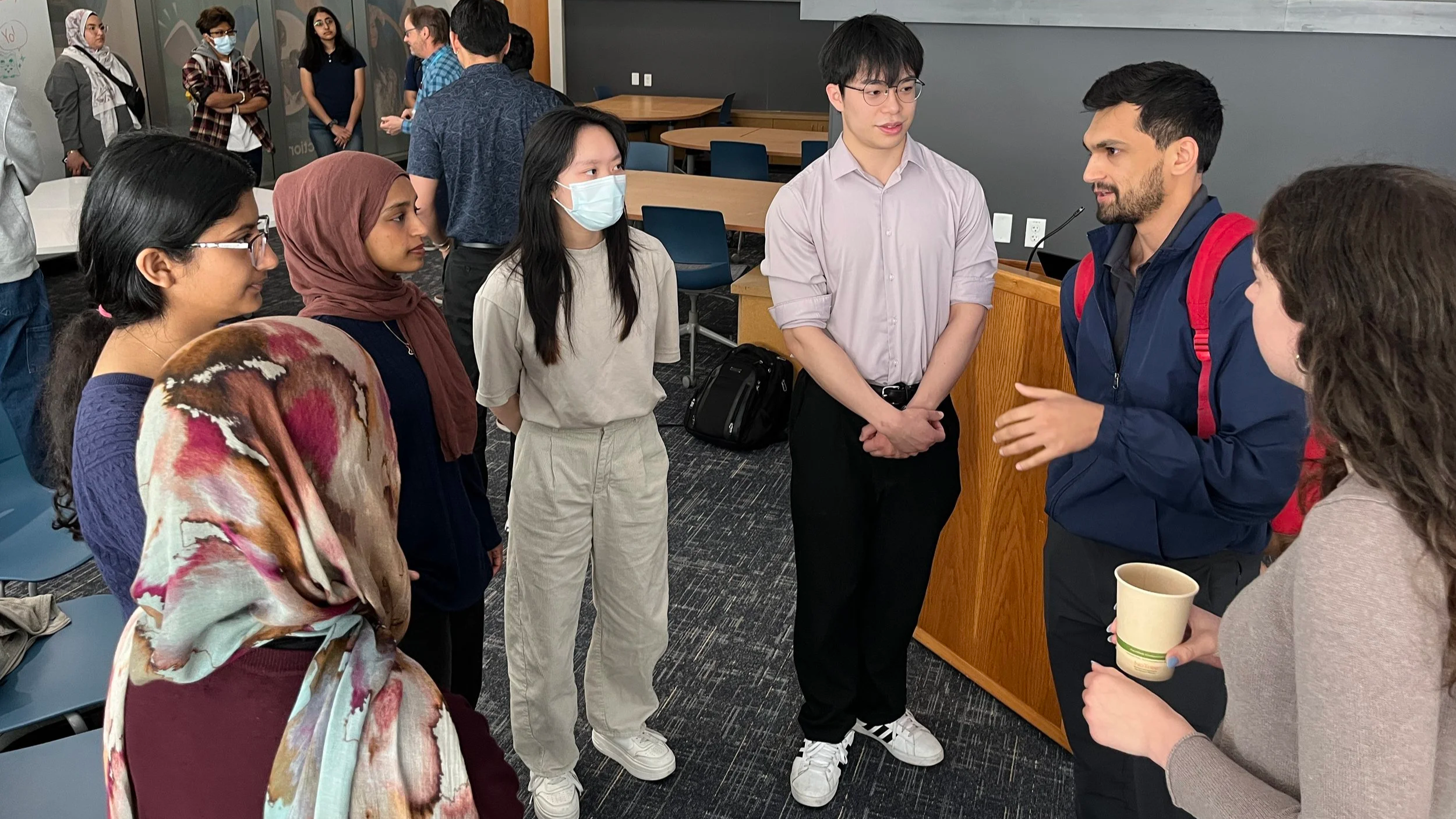A New Model in Career-Connected Education
AUGUST 2025
In Spring 2025, the Bay Area K-16 Collaborative launched a groundbreaking project-based learning (PBL) pilot in career-connected education at San José State University (SJSU). Designed to connect the classroom with real-world experience, this pilot marked the first-ever class at a major public U.S. university to be co-designed and taught by an engineering department, a career center, and a regional business association.
Developed by SJSU Engineering, the SJSU Career Center, and the Silicon Valley Leadership Group Foundation (SVLGF), the PBL course gave students the opportunity to build critical skills in teamwork, communication, project scoping, and problem-solving through employer-provided projects.
In Fall 2024 and early Spring 2025, SJSU and SVLGF worked closely with three employer members of the Silicon Valley Leadership Group (SVLG)—Texas Instruments, Amazon Web Services (AWS), and Mainspring Energy—to create semester-long projects that aligned with workforce needs and were appropriately scoped for undergraduate engineering students. Each project included defined student learning objectives, deliverables, mentorship, and a final presentation to sponsoring companies.
In total, 27 students enrolled in the PBL course, dedicating approximately 30 hours each to their assigned project. Along the way, students gained valuable technical and workplace competencies, built relationships with industry professionals, and experienced firsthand what it means to work on real engineering problems.
Real Projects, Real Partnerships:
Industry Collaborations in Spring 2025
Amazon Web Services: Designing for Critical Infrastructure
Led by Jim Rowland and Jim Underwood, veteran engineers focused on infrastructure design and commissioning at AWS, this project immersed students in the design planning of a mission-critical facility such as a data center. Student teams created a “Basis of Design” document detailing building size, layouts and structural needs, electrical and mechanical load requirements, environmental inputs and regulatory considerations.
Students engaged with the types of questions and decision-making processes typically handled by electrical engineers, mechanical engineers, civil engineers, architects and project managers - collaborating to explore the foundational planning work behind complex construction projects.The experience introduced them to the field of consulting engineering and highlighted how various disciplines converge in high-stakes design environments.
Texas Instruments: Power System Simulation and Career Onboarding
Guided by TI engineers Vijay Ravindran and Sophie Canepa, this project tasked students with designing a power tree based on a real-world example of a common TI customer use case. Students took the power design and used simulation tools to show how this design would regulate power to other downstream components in the system. This assignment was adapted from TI’s actual onboarding process for new engineering hires.
Students applied principles of electrical and computer engineering to optimize voltage regulation and thermal management, utilizing simulation tools and lab access where possible. Office hours and mentorship from TI engineers gave students professional insight into the design and troubleshooting process. This experience not only developed students’ technical proficiency but also introduced them to real onboarding practices within the tech industry.
Mainspring Energy: Smarter Systems for Cross-Platform Data Exchange
Cecilia Reyes, a recruiter and Bay Area K-16 Collaborative Steering Committee member, and Jeff Emmendorfer, an embedded systems engineer, introduced students to a highly relevant challenge in distributed embedded systems: efficient and error-resistant data sharing across platforms ranging from cloud-based servers to embedded devices.
The project involved designing a bridge application that could translate between HTTP requests and DDS (Data Distribution Service) topics, using a custom interface definition language (IDL). Students explored how automation and code generation could reduce redundant manual coding, eliminate errors from mismatched data structures, and streamline development across systems. The project emphasized modular thinking, interface consistency, and cross-disciplinary collaboration - essential skills for clean tech innovation.
Building Industry Relationships
Employer involvement extended far beyond guest lectures. Each company actively contributed to project development in Fall 2024, introduced challenges directly to students in Spring 2025, participated in the capstone showcase in May, and provided critical feedback during an end-of-year debrief session with the university.
This engagement structure proved effective and sustainable for busy employers because it required just 10-15 hours total across the semester. And for the students, it allowed for invaluable feedback and networking.
The semester concluded with a showcase at SJSU’s Dr. Martin Luther King Jr. Library, where students presented final deliverables to university and industry stakeholders. Representatives from AWS, TI, and Mainspring Energy attended in person, offering live feedback and reflecting on the growth they observed in student teams. The day also included rotating small group discussions and, vitally, student-employer networking time. For many students, it was their first time showcasing professional work to real employers. For the company representatives, it was a compelling opportunity to see student innovation in action - and, in some cases, identify potential interns or future hires.
Lessons Learned & What Comes Next
This PBL pilot course confirmed that effective, scalable, cross-sector experiential learning is possible.
Key takeaways include:
University faculty and career professionals collaborating as a team produce transformative results.
Educational institutions and employers should leverage a local intermediary—such as a chamber of commerce or economic development group—that speaks the languages of both business and education, to effectively manage collaboration and align goals in service of industry, academia, students, and the broader community.
Employers are eager to engage when expectations are clear and deliverables are meaningful.
Students thrive when they receive consistent, structured feedback and visibility into real career pathways.
Modular, project-based courses can serve as low-barrier entry points into industry engagement for students of varying backgrounds.
Professional skills, such as résumé building and developing an in-person and online presence, can and should be woven into every class.
Employers in PBL initatives should commit to at least four hours of direct student interaction, ideally spaced across the course—at the launch, midpoint, and conclusion—to support engagement, guidance, and reflection.
The PBL class now stands as a living prototype for career-connected learning—rigorous, inclusive, and aligned with the future of work. The model is already scaling, with plans to:
Run at San Jose City College beginning Fall 2025
Launch as a full-year capstone at San José State University 2025-2026 to support deeper, sustained engagement with industry projects.
If you are an employer or education institution interested in learning more about how to partner on or adopt this model,
contact the Bay Area K-16 Collaborative.


